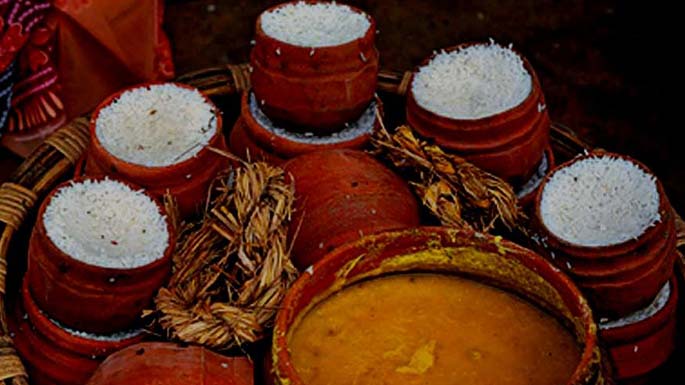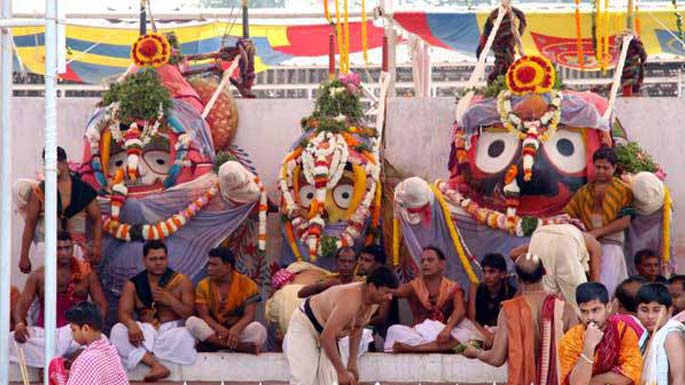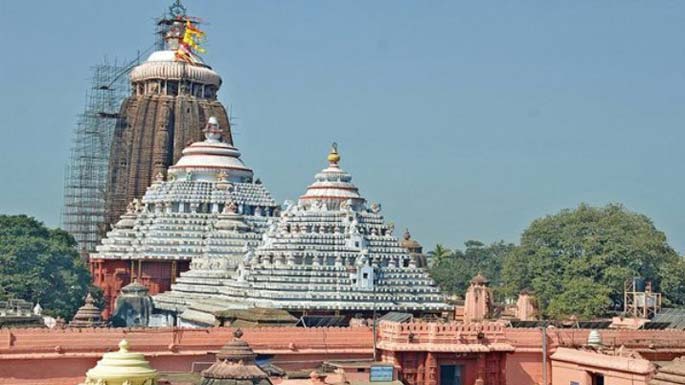“Prasad” or the food offerings made to god hold a very significant place in Hindu religion. Having Prasad with full devotion is almost equivalent to worshipping the almighty with all respect and reverence, as it is the food that has been taken and blessed by the deity. It is believed that any puja or prayer ritual is incomplete without bhog or prasad.
Puri- Where Lord Jagannath Dines
Almost every temple big or small offers bhog to the devotees; however the importance of Mahaprasad of Jagannath is altogether different and holds special prominence. Why?
Because Puri is one of those Char Dhams that are very special to Lord Vishnu and it is this place where he dines daily. There goes a belief that Lord Vishnu observes his daily routine at four places- He bathes at Rameswaram, meditates at Badrinath, dines at Jagannath Puri, and retires at Dwarka.
So now it’s quite obvious that why the Mahaprasad, which is also known as ‘Anna Brahma’, of Puri holds special prominence. With the belief that it is this place where Lord Vishnu comes to dine, the food offerings become more respectable and important.
Also the Skanda Purana states that-
“Lord Jagannath redeems the devotees by permitting them to partake his Mahaprasad, to have His darshan and to worship him by observing rituals and by offering of gifts.”
The Mahaprasad
Mahaprasad is of two types- Sankundi and Sukhila.
The Sankundi comprises of 56 types of dishes, including various types of dals, rice, saaga bhaja. Khatta, porridge etc and are prepared every day. Sukhila is generally sweetmeats. The Prasad is offered to Lord Jagannath first and then to Goddess Vimala, and then attains the position of Mahaprasad.
The Mahaprasad is available in Ananda Bazaar. Apart from the 21 days preceding the Rath Yatra, Mahaprasad is never ceased.
The temple kitchen prepares Mahaprasad for lakhs of devotees daily. The food is prepared in earthen pots using firewood. The Mahaprasad is offered to every devotee, irrespective of caste.
Nirmalya is another type of Prasad available at Puri, which is also known as Kaibalya.
Daily Offerings
There are 6 time slots of the day, when Lord Jagannath is served. The local names for daily offerings are Dhupa (when offered through Sodasa) and Upchars and Bhoga (when offerd by pancha upcharas). They include-
- Gopala Vallabha Bhoga
- Sakala Dhupa
- Bhoga mandapa bhoga
- The Madhyanha dhupa
- Sandhya Dhupa
- Bada Simhara Bhoga
The Legend
The tale of Mahaprasad becoming “Mahaprasad” is also quite interesting like the other takes of Jagannath Puri.
According to one legend when Lord Rama returned after defeating Ravana, he questioned Laxaman that what happened to the food packets he gave to Laxman during the ban-baas, because it was possible for him to kill Indrajeet (Ravana’s son), only if he had not eaten and slept for 14 years. Laxman then told him that he hid and preserved those food packets in a tree in Panchbati. Lord Ram ordered Hanuman to bring those food packets. Hanuman was bit reluctant as he thought that task was a small job for him but followed the orders of his prabhu. But because of his ego, he could not move that food packets and returned to Lord Ram stating his inability to complete the given task. At last, Laxman himself fetched those food packets. The food was still intact and in condition to be consumed. However, 7 packets were missing and Laxman informed about the 7 seven occasions when he was not offered any food and thus 7 packets were missing. Everyone present there praised Laxman for such a supreme sacrifice.
It was Lord Ram, who praised Urmila, Laxman’s wife and said that it was her, in actual sense, who has made the supreme sacrifice and patiently waited for her husband to return. In return he ordered the creation 4th throne for Urmila along with his, Laxman’s and Sita’s throne, but Urmila declined the gift in very humble manner and asked for opportunity to serve Lord Ram.
Lord Ram was immensely pleased and granted her a boon, for which she asked that she did not desire to be worshipped in future or to be seated on any throne, but would like to bean incense stick that will offer fragrance to you and be at your feet for the ages. Lord Ram granted her wishes by giving opportunity that when in Kal Yug he will reside at Jagannath Puri and Laxman will be his elder brother, she will spread fragrance and flavour as Mahaprasad.
Subscribe for more such interesting tales and information- only at Hotel Holiday Resort Blog





